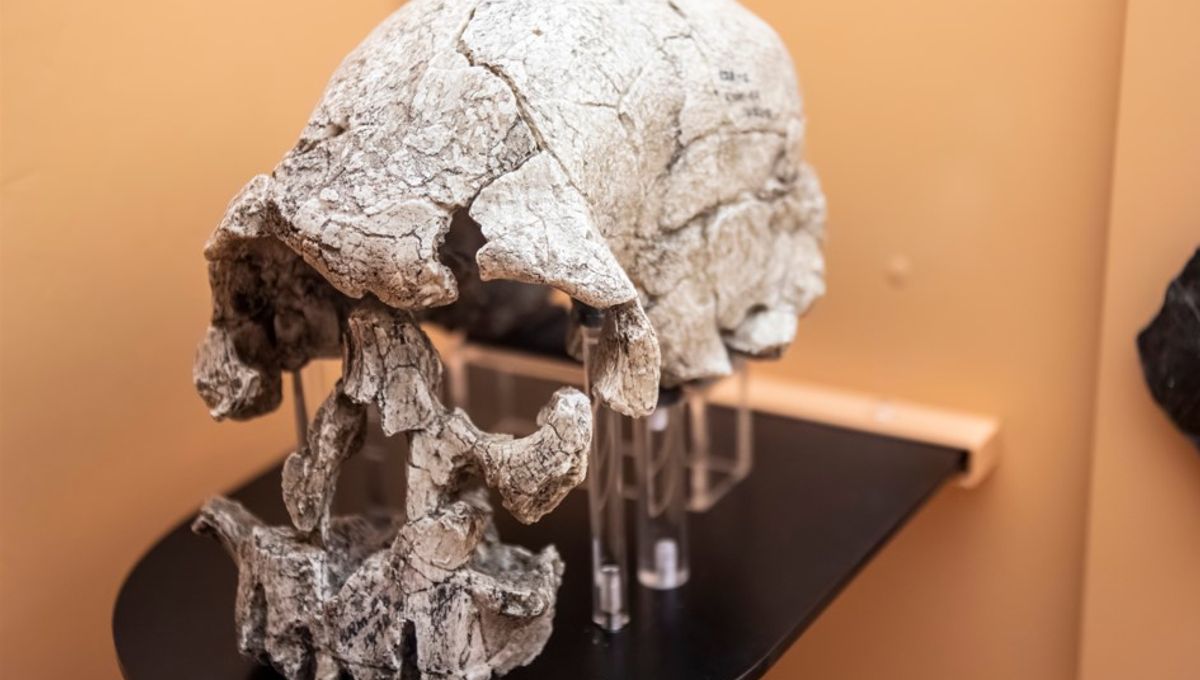
Around 2.3 million years ago, ancient human species such as Homo rudolfensis and Homo erectus suddenly changed their diets. Using their large brains, these extinct hominins manufactured digging tools that they used to access carbohydrate-rich tubers, bulbs, and corms, despite the fact their teeth were unsuited to chewing these starchy plant fibers.
By analyzing the carbon and oxygen isotopes in the fossilized teeth of prehistoric humans, the authors of a new study were able to reconstruct these dietary changes, revealing that it took a further 700,000 years for our ancestors’ molars to catch up with their culinary behaviors. The findings provide concrete evidence to support the theory of behavioral drive, which holds that dietary habits and other behaviors that are beneficial for survival can trigger corresponding morphological changes.
“As anthropologists, we talk about behavioral and morphological change as evolving in lockstep,” said study author Luke Fannin in a statement. “But we found that behavior could be a force of evolution in its own right, with major repercussions for the morphological and dietary trajectory of hominins.”
Based on the isotopes in the teeth of an early hominin called Australopithecus afarensis, the researchers discovered that humans began feeding on herbaceous grassy plants known as graminoids around 3.8 million years ago. However, about 1.5 million years later, the isotopic ratios in the teeth of some Homo species suddenly changed, indicating a massive increase in consumption of oxygen-depleted waters.
Tellingly, these isotopic values are indistinguishable from those of fossilized mole-rats, which fed on the bulbs and corms of certain graminoids. The study authors therefore conclude this abrupt switch reflects an increase in the consumption of underground storage organs like tubers, which reflect the oxygen-depleted waters of the surrounding soil.
The timing of this change also aligns with the expansion of human brains and the development of stone tools that could have been used to dig up these energy-rich root vegetables. All of this suggests that cognitive advances enabled our distant ancestors to adopt a new diet based on readily available, nutrient-rich foods that circumvented the need for dangerous hunting expeditions.
“We propose that this shift to underground foods was a signal moment in our evolution,” Fannin says. “It created a glut of carbs that were perennial – our ancestors could access them at any time of year to feed themselves and other people.”
However, while eating tubers may have brought a host of survival advantages, early Homo species lacked the dental hardware required to break down the tough fibers in these subterranean treats. Examining the fossil record, the researchers found that it wasn’t until 1.6 million years ago that human molars evolved into a form more suitable for chewing tubers, bulbs, and corms – some 700,000 years after we began relying on them.
The fact that we spent so many millennia surviving on foods that our bodies weren’t designed for is a testament to our ancestors’ flexibility, creativity, and adaptability. According to the researchers, this ability to improvise and find solutions at this early juncture in our history may have paved the way for our more recent evolutionary success.
“One of the burning questions in anthropology is what did hominins do differently that other primates didn’t do?” explained study author Nathaniel Dominy. Noting that prehistoric primates didn’t switch from grasses to tubers, he says that “the ability to exploit [underground] grass tissues may be our secret sauce.”
“Even now, our global economy turns on a few species of grass – rice, wheat, corn, and barley,” says Dominy. “Our ancestors did something completely unexpected that changed the game for the history of species on Earth.”
The study is published in the journal Science.
Source Link: Prehistoric Humans Began Eating Tubers 700,000 Years Before Our Teeth Evolved To Do So